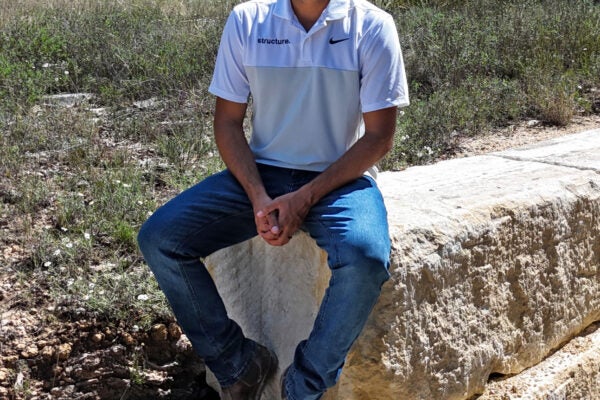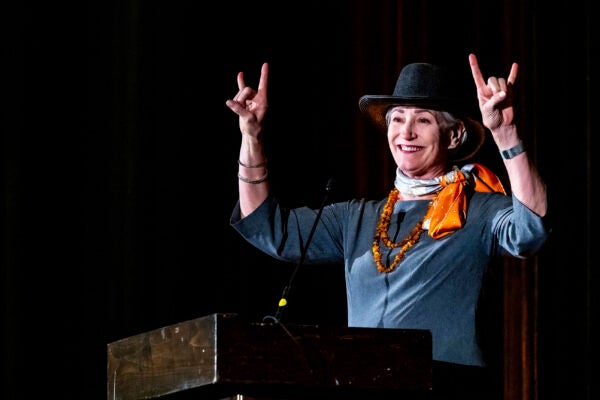Young Workers New Leaders
Gen Z and Millennials are Changing Their Workplaces, and Their Leaders are Responding
By mary Ann Roser
Illustration By Neil Jamieson
You probably have heard.
Today’s companies are teeming with younger workers. The two youngest groups, millennials (born between 1981 and 1996) and Gen Z (born from 1997 to 2012), make up over half of today’s workforce and will be two-thirds in five years. As they bring to the office their tech savviness, intense experience with the COVID-19 pandemic, and questions about job security, they are reshaping workplaces.
Various studies and surveys report that younger workers, especially Gen Z — the first full generation of “digital natives” — have priorities and expectations about work that are different from those of preceding generations.
“They’re looking to reshape what work is at its core,” says Deloitte’s 2025 survey of 23,482 young workers in 44 countries called “Gen Z’s and Millennials at Work: Pursuing a Balance of Money, Meaning, and Well-Being.”
“From seeking out more flexibility to prioritizing mental health and meaningful impact, they’re rejecting traditional notions and structures of work in pursuit of their own definitions of career satisfaction and growth,” the report says.
‘More Than a Paycheck’
Insiya Hussain, an assistant professor of management at McCombs, has published research on organizational dynamics, including how employees can overcome the challenges of speaking up at work. “Broadly speaking, younger workers are desiring a deeper connection to their work and a sense that the company cares about their well-being. It’s this idea that work is more than a paycheck, and there’s some intrinsic fulfillment to be gained from one’s efforts,” she says.
“At the same time, when recessions loom and job prospects are dim, Gen Z and millennial workers are like anyone else. Financial concerns definitely come to the fore.”
Younger workers, who experienced major disruptions from the pandemic in schooling and work, are well attuned to the realities of market uncertainties, workforce fluctuations, and the exploding importance of artificial intelligence across industries. These issues also can affect how bosses lead them.
Data show Gen Z is more diverse and highly educated than previous generations. In addition to wanting a supportive environment, Gen Z and millennials expect remote-work options, opportunities for learning and development, more feedback from bosses, and a sense of purpose in their work, says Kristie Loescher, a McCombs professor of instruction in the Management Department and an assistant dean for instructional innovation. She has a doctorate in business administration, a master’s in public health, and a senior professional certification in human resources.
“They are very motivated by purpose,” she says of younger workers. “They want to connect to their company, and they want to feel their company is ethical and doing the right things.”
At the same time, studies show they also seek financial security in a world in which homeownership dangles farther out of reach. A majority of Gen Zers “do not believe they will ever be able to afford to retire,” and that idea can feed differences in how they view work, says Jason Dorsey, president of The Center for Generational Kinetics, an Austin company studying millennials and Gen Z in the workplace.

Employers have responded by touting their benefits, including mental health coverage, and are paying more attention to how they treat new hires, says Dorsey, a former McCombs student who notes that a speaker in one of his classes inspired him to leave and write a book, “Graduate to Your Perfect Job.” His latest book is “Zconomy: How Gen Z Will Change the Future of Business — and What To Do About It.”
“Gen Z and millennials tell us two areas they want to develop are problem-solving skills and communication skills,” says Dorsey, a frequent TV news guest and keynote speaker. “The big shifts we’re seeing arise in preboarding and onboarding. The first day and the first 30 days have a disproportionate amount of influence in how long people stay in their jobs. … We’re also seeing a renewed focus in terms of soft skills and in talent development programs.”
How Leaders Respond
Hussain and Loescher say they see a shift toward leaders demonstrating a more collaborative, empowering style of leadership. “These generations — blue collar, white collar, retail — do not respond well to ‘my way or the highway’ or ‘do it because I said so,’” Loescher says. “Parenting styles are very different now, so they don’t get that from their parents, and they won’t accept it from their bosses.”
A collaborative leadership style, Hussain says, “can lead to higher employee engagement, less attrition, and simply just building better relationships. Being participative and being open to feedback not only creates a more welcoming work environment, but also benefits the organization. How else are you going to innovate and solve customer problems if front-line workers are afraid to speak up?”
Not surprisingly, it can be easier for younger leaders to show more empathy toward workers from their own generations and to be more challenged by managing older workers. “Being flexible and using your generation as a strength to be flexible and adapt as you get older is a huge advantage in leadership today,” Dorsey says.
But soft skills can harden into more traditional top-down styles, when business conditions become more challenging, Hussain adds. McCombs trains its undergraduate students in leadership so they can adapt to changing workplaces, she says.
Dorsey says his company’s research has found that younger workers feel a disconnect in the workplace today across industries “where they feel they’re not being heard or getting the performance they want. Young people feel their talent isn’t being developed fully.”
The more generations you have at work, the stronger your workforce is because you need those different perspectives.”
— Jason Dorsey, President of The Center for Generational Kinetics
Although younger generations bring “incredibly valuable skills at a time of massive change and uncertainty,” their perspectives about their jobs differ from those of their elders, he says.
“When we interview previous generations, they often tie their identities to what they do between 8 and 5. We frequently find younger generations tie their identity to what they do after 5,” Dorsey explains. “So, you can start to see a disconnect there and some of those values colliding.”
A Cultural Shift
Across society, the culture has changed, Loescher says. “We don’t live in the same environment as we did in the 1980s, and when you have that different of an environment, the rules have to change. And the people who drive those changing rules are the biggest group of people, and that’s millennials and Gen Z now.”
To lead those groups successfully, managers need to act like a coach, Loescher says. “If you think of yourself as a coach, you’re going to establish the kind of relationship people are hoping for and expecting from their management.”
Today’s successful leaders also must keep up with technology to stay relevant, in addition to providing feedback so employees can see how they’re contributing to the organization’s purpose, Loescher says.
Dorsey says that his company has led over 150 research studies, and the differences they see — in communication, motivation, work preferences, and more — “don’t mean the issues are solely because of generations. It just means there are differences underneath the surface that if we acknowledge them, we can give people the space to be who they are, so they can bring whatever is best to that workplace.”
Because people are living and working longer, there are now five generations — for the first time — in workplaces, Dorsey says, adding that all generations drive changes in the workplace.
“Don’t make it an us-versus-them conversation but rather a focus on the value and strengths that we each bring,” Dorsey says. “Our key message is, generations are clues and not a box. At the end of the day, we are all still people. Every generation is equally important. The more generations you have at work, the stronger your workforce is because you need those different perspectives.”
Leading Forward
Across industries, today’s leaders are responding to work’s evolving landscape. In the pages ahead, we spotlight McCombs alumni entrepreneurs in three distinct businesses: outdoor wear, alcoholic beverages, and beauty. Their personal styles, inspirations, and business missions vary, but all are adapting to today’s challenges and leading with purpose. Their leadership stories follow.
About this Post
Share:


